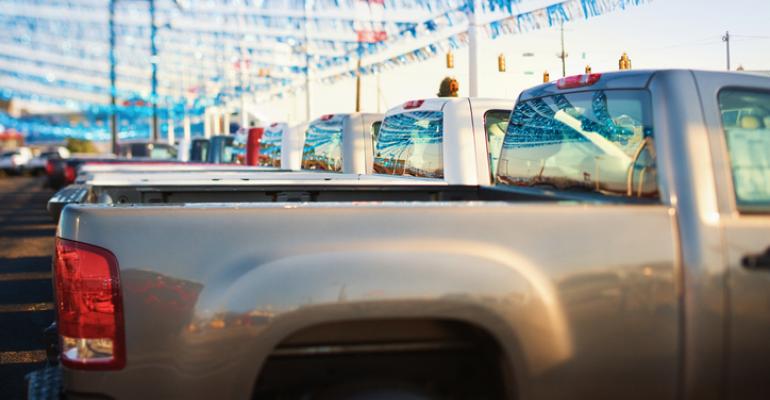Initially, auto industry analysts speculated COVID-19-related closures of manufacturing facilities in China would squeeze supply, leaving many car shoppers in a lurch.
In reality, as COVID spread to the U.S., shelter-in-place and stay-at-home orders stateside ended up impacting car sales more.
 The global pandemic certainly hit home with lower U.S. new-car sales, but the severity of the impact varied by region and vehicle type.
The global pandemic certainly hit home with lower U.S. new-car sales, but the severity of the impact varied by region and vehicle type.
People continued to purchase new cars and trucks. However, spring sales dropped significantly in certain regions, such as the Northeast and West Coast, which faced earlier and more restrictive government public-health mandates.
It was an unprecedented spring, to say the least. Looking forward, we anticipate near-term sales growth will depend on continued government stimulus, the absence of COVID resurgences and OEM appetites for customer incentives.
A true recovery could take up to three years. Long-term, broad economic trends may suppress U.S. car sales for at least a decade.
The Stimulus Question
The federal stimulus programs that provided money for individual consumers as well as paycheck protection for businesses propped up the economy when it needed it. However, whether people receive another stimulus check this year, and how large that check would be, remain big questions.
Without additional stimulus, we predict U.S. new-car sales will land at about 13.2 million for 2020, down from 17.1 million last year and a peak of 17.6 million in 2016. This year is expected to break a five-year streak of selling more than 17 million new cars annually.
High unemployment rates and consumer spending dips related to ongoing COVID-related closures present additional challenges.
In the 2008-2009 financial crisis, the industry leaned on cash-for-clunker programs and other incentives to bring buyers to the dealer lots.
We’ve seen a rise of low-interest and no-interest auto loan programs from OEMs, but no signs indicate the government will step up with an automotive incentive program.
A Longer Road Back
Beyond this year, we anticipate it may take at least two to three years for car sales to recover to pre-COVID volumes. That’s certainly longer than many people are hoping for. But the crisis created complicated problems that won’t be quickly solved. These include:
- Increased corporate, government and consumer debt. Rising debt levels in all three areas threaten to slow spending and drag on economic growth.
- Hard-hit sectors will take longer to recover. Many small businesses and entire sectors, such as travel and hospitality, still are feeling the full weight of the pandemic. Their recovery will push well into next year.
- Continued work-from-home policies. The percentage of employees working from home five days a week grew from 5% in 2019 to 77% in 2020, according to a survey from Iometrics and Global Workplace Analytics. We anticipate that to level out to about 30%. Even so, that’s a lot of non-commuting car owners reducing their mileage and extending the life of their vehicles, delaying the need to buy new ones.
- Reduced travel impacts rental fleets. Hertz, for example, said in a recent SEC filing that it would not purchase new cars for the remainder of 2020. The impacts of the crisis on travel will likely last much longer.
Industry-Changing Trends


 Regardless of possible government assistance driving a faster recovery in the near-term, industry growth will slow over the next decade. (Wards Industry Voices contributors, from left, Doug Mehl, Harris Ng and Ryan Jackson)
Regardless of possible government assistance driving a faster recovery in the near-term, industry growth will slow over the next decade. (Wards Industry Voices contributors, from left, Doug Mehl, Harris Ng and Ryan Jackson)
Public transportation improvements, the rise of ride sharing, reduced car-culture interest among younger generations and the increasing longer life of cars promises to put downward pressure on the long-term number of cars per capita.
In response, the industry must get creative to capture the attention of future buyers.
The COVID crisis eventually will end. However, the macro headwinds the auto industry faces will last longer and could remake the business as we know it.
This column is co-written by Kearney management consulting firm’s Doug Mehl, a partner and Americas Lead-Automotive and Industrials Practice; Harris Ng, a partner; and Ryan Jackson, a manager.





